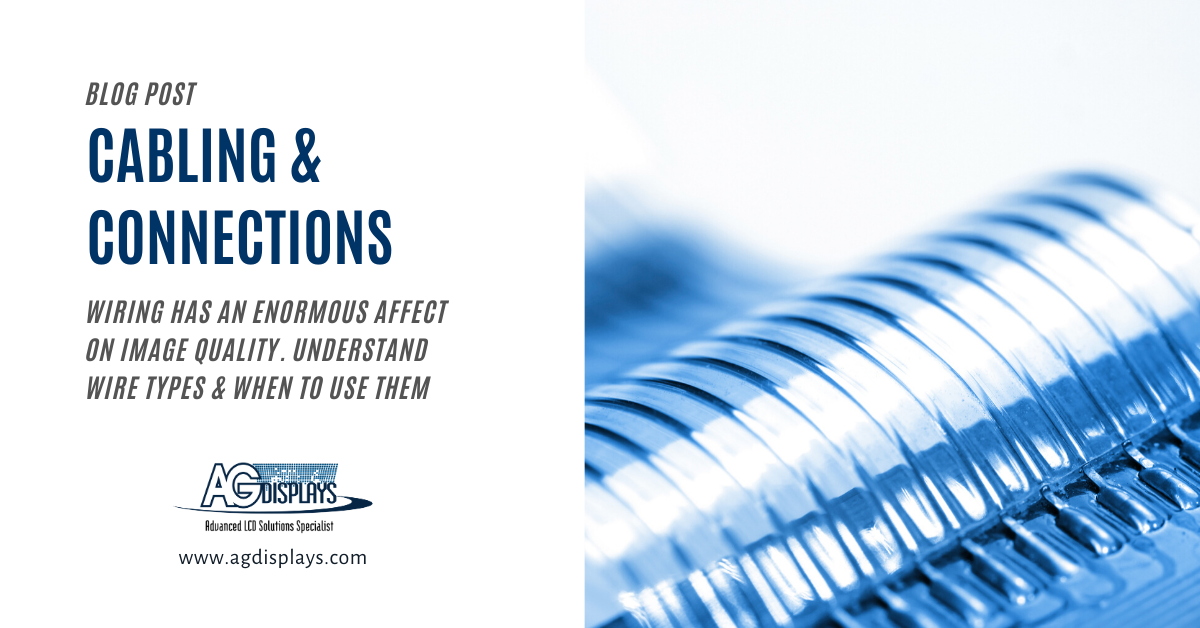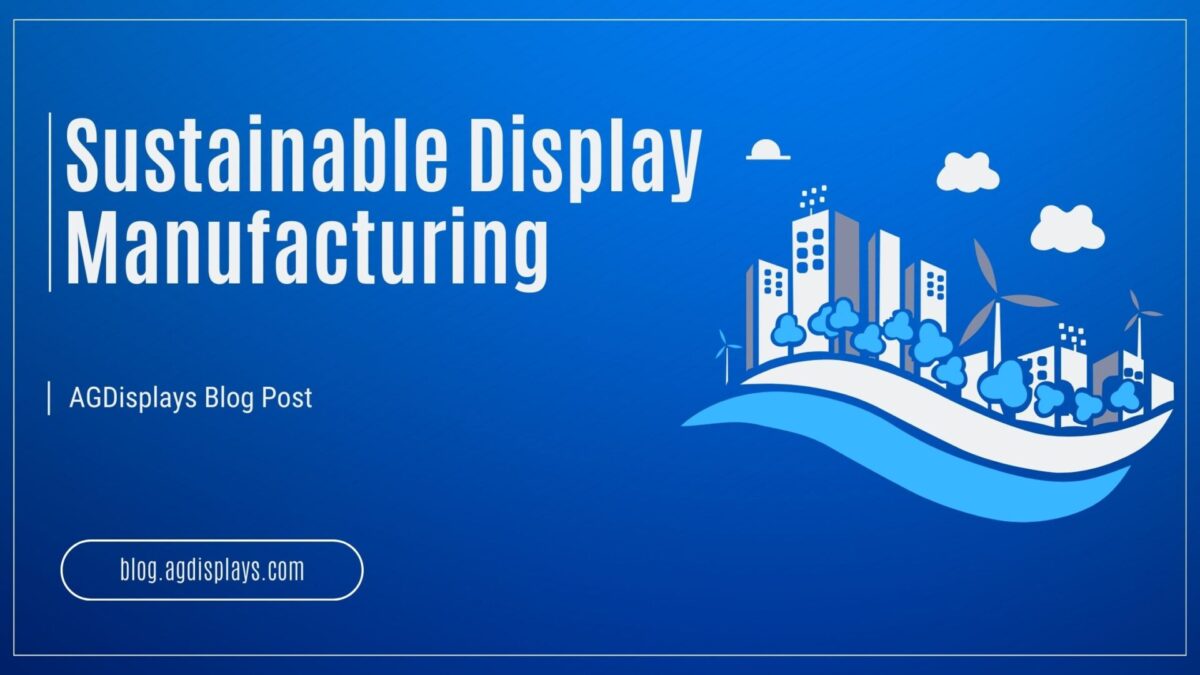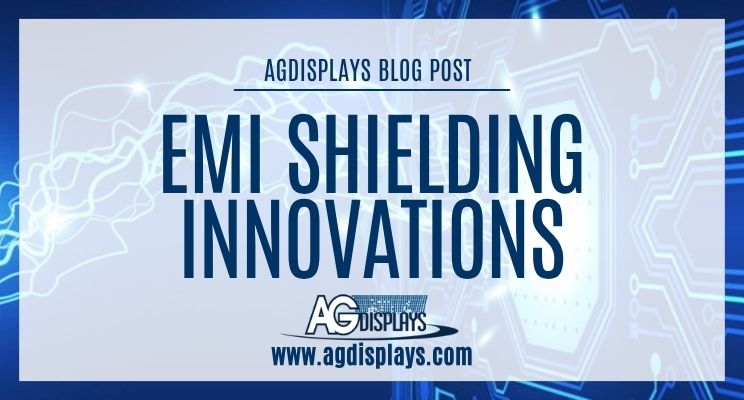Cabling is an easily overlooked aspect of display design. Whether hidden out of view and tucked neatly behind components, or tangled and rigged like something from Mission Impossible, the wiring you choose has an enormous affect on the quality of image produced by your LCD.
The type of wiring needed for your LCD is dependent on a few factors. Variables such as display interface, connector type, resolution, data rate, Electromagnetic Interference (EMI), external controllers, and physical space all combine to determine the type of cabling that best connects a display to its data source.
Display Interface Overview
Along with the type of cabling required for a display, it’s important understand the type of interface being used. Display interfaces are usually determined by screen size and resolution, which will have a major influence on the amount of wiring and connections needed. The types of interfaces most commonly used throughout the display industry are:
SPI Interface: Serial Peripheral Interface, a simple 8-bit data exchange, usually on small or low-resolution panels.
MCU Parallel Interface: Two types of signals are used to determine data (color depth) and control (accessing registry or RAM). One wire is used for each bit of data, and 8-bit is most common. Pinout varies with color depth.
RGB Interface: A type of parallel interface in which 8-bits of data are used for each of the three primary colors (Red, Green, Blue). For medium size panels and average resolution.
LVDS Interface: High speed data transmission with low voltage and 24-bit color depth. LVDS interface is intended to not generate or be affected by external noise. Used mostly for larger displays with average to high resolution.
MIPI-DSI Interface: The interface used mostly by mobile and wearable displays, also the most recently introduced. High speed data transmission at low power. Best for small displays with high resolution.
eDP Interface: The latest VESA interface standard. Reduces the amount of wiring by carrying a video source as well as audio, USB and other data types. Intended for medium to large displays with greater than 4K resolution.
The number of connections that need to be made with each interface varies, and therefore can sometimes limit the available room for physical wiring. Some display interfaces such as MIPI and LVDS can have 40+ pins to connect a proper signal. In this example; it can be unrealistic to connect so many individual round wires to a small form display, or a display found in a portable device like a smartphone or wearable. It’s obvious that making smart design choices with the type of cabling becomes a crucial step in the overall presentation of the display.
AGDisplays Cabling Solutions
For tight designs where component and cabling space is limited, a Flat Flex Cable (FFC), or Flexible Printed Circuit (FPC) can help compact high-density connections into a package that is small and flexible. Using a variation of a ribbon cable, an FFC is often simply a straight connection between two components. For example; an LCD could be connected directly to an LCD controller via FFC.

Similar to FFC, the Flexible Printed Circuit is a type of cable takes the flat and flexible properties of the FFC and adds a printed electronic circuit embedded into the cable itself. Where-as an FFC would link two components, an FPC can combine the cabling and the component into one integrated piece, saving space and cost. For example, an LCDs IC controllers can be integrated into the FPC to reduce component footprint at the rear of the display. AGDisplays offers a variety of standard FFC and FPC configurations, styles and sizes, as well as the ability to customize these parts to the individual design.

When a design calls for a large number of integrated components, or it falls under strict EMI guidelines, Micro-coaxial cables offer insulated protection in a sleek form factor similar to FFC, while providing low capacitance and controlled impedance. AGDisplays micro-coaxial cables are often found in devices such as medical displays, environmental sensors, and military hardware where high-reliability and high-sensitivity to EMI are at the forefront of concern. Our micro-coaxial cables can be designed for a variety of interfaces including LVDS and eDP, and are offered in gauges of up to 40 AWG at standard lengths.

Some LCD designs call for the ability to quickly access and disassemble the cabling, whether for portability or storage, or to interconnect quickly with multiple devices. For these requirements, AGDisplays employs the use of FPDI-1/VESA Type Cables. This type of cable typically combines round wire to a “Hirose DF9” style locking connector, but AGDisplays also supplies FFC & Hirose DF9 combinations for designs requiring more compact cabling. Whether round wire or FFC, this type of locking interface provides smooth insertion and extraction, plus offers a level of security with its easy lock mechanism. With a low profile and low cost, FPDI-1/VESA Type Cables are a great and flexible choice for many designs.

Many designs that AGDisplays works to improve involve components and peripherals that have mismatched interfaces, a variety of wire styles, and conflicting connections. To deal with this, AGDisplays has engineered many solutions to adapt from one style of cabling to another. One such solution is our Hybrid wires. AGDisplays Hybrid wires combine FFC or FPC together with round wire using appropriate conversion boards, adapters or extensions. Put simply, Hybrid wire is a round wire/flat flex combination. Hybrid wires allow AGDisplays and the customer to interface from one wire style to another, often giving engineers access to components within complex systems. Our use of conversion boards – which take a standard LCD data signals like LVDS, and output them to a more consumer friendly signal like HDMI or VGA – along with Hybrid wiring opens the entire playbook for how our displays can be connected to your device.

Finally, AGDisplays offers connections with flying leads and open-ended cables for engineers to prototype and finalize their designs. Working together, AGDisplays and the customer can formalize cabling from concept drawing to mass production. Our flying leads can be used to benchtop test throughout the process so that the perfect cable design can be found and created from scratch.
Conclusion
AGDisplays provides all of the options available to overcome any design challenge, and to help make a connection. From Flying Leads and Open-ended wires, to FFC and Micro-coaxial cables, AGDisplays can create the right cabling solution for your display, and be your source for parts, performance, and engineering. With over a decade of LCD design experience, AGDisplays is committed to being a leading provider of high-quality LCD enhancement products and services for the industrial markets. We provide our expertise and quality display products to the Medical, Marine, Transportation, Manufacturing and Finance industries, as well as all branches of the US Military. To learn more, or to start your display project with AGDisplays, please visit our website at https://agdisplays.com/.















